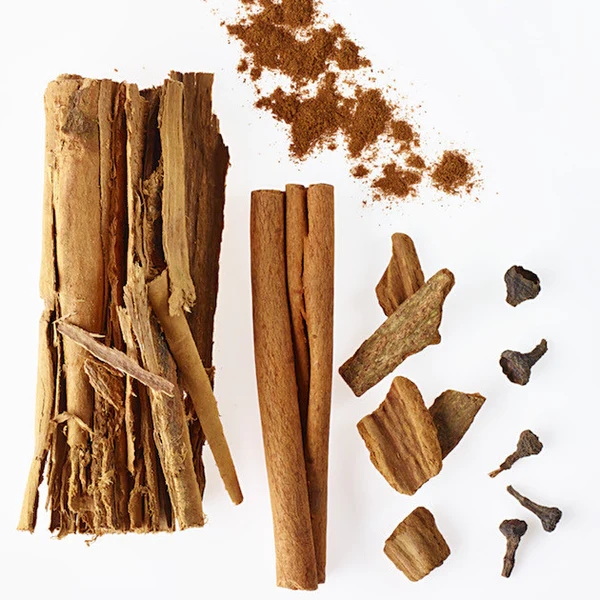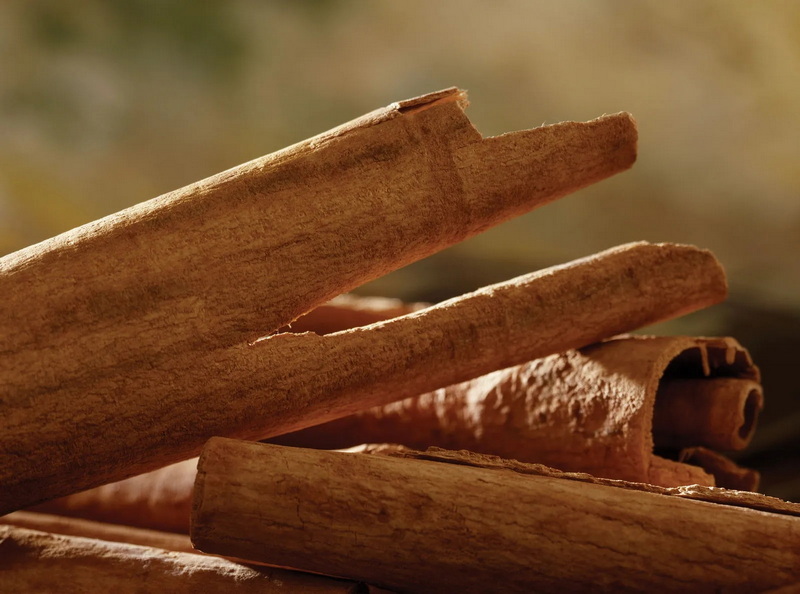Content Menu
● Introduction to Cinnamon Bark Extract
>> Visual Inspection
● Sensory Evaluation
>> Sensory Panel Training
● Chemical Analysis
>> Carbon-14 Testing
● Microbial and Heavy Metal Testing
>> Microbial Testing Protocols
● Choosing a Reliable Cinnamon Bark Extract Supplier
>> Sustainability and Environmental Impact
● Market Trends and Future Outlook
>> Innovations in Extraction Technology
>> Future Developments
● Cinnamon Bark Extract Suppliers
>> Supplier Evaluation Checklist
● Conclusion
● FAQs
>> 1. What is the primary active compound in cinnamon bark extract?
>> 2. How can adulteration in cinnamon bark extract be detected?
>> 3. What certifications should a cinnamon bark extract supplier have?
>> 4. How does the quality of cinnamon bark extract affect its shelf life?
>> 5. What are the common uses of cinnamon bark extract?
● Citations:
Ensuring the quality of cinnamon bark extract from suppliers is crucial for businesses involved in the food, pharmaceutical, and cosmetic industries. Cinnamon bark extract, derived from the bark of cinnamon trees, is valued for its bioactive compounds like cinnamaldehyde, which possess antimicrobial and antioxidant properties. In this article, we will explore the methods and considerations for verifying the quality of cinnamon bark extract from suppliers.

Introduction to Cinnamon Bark Extract
Cinnamon bark extract is primarily sourced from two species of cinnamon trees: Cinnamomum verum (Ceylon cinnamon) and Cinnamomum cassia (Chinese cinnamon). Ceylon cinnamon is renowned for its delicate flavor and aroma, while Chinese cinnamon is commonly used in traditional medicine and cooking due to its stronger flavor.
Visual Inspection
The first step in evaluating the quality of cinnamon bark extract is visual inspection. High-quality extracts typically have a uniform brown color without unnatural shades. The texture should be fine and powdery for powdered extracts. Any visible signs of moisture or clumping may indicate poor storage conditions or adulteration.
Sensory Evaluation
The aroma and taste of cinnamon bark extract are distinctive. High-quality extracts have a sweet, warm, and spicy aroma, while low-quality products may smell more like flour or have an unpleasant odor. Sensory evaluation by trained panelists can help identify any deviations from the expected sensory profile.
Sensory evaluation is not only about detecting defects but also about ensuring consistency across batches. Consistency in aroma and taste is crucial for maintaining product quality and customer satisfaction.
Sensory Panel Training
Training sensory panelists involves educating them on the characteristic sensory attributes of cinnamon bark extract. This includes recognizing the intensity of sweetness, spiciness, and warmth. Panelists must also be able to distinguish between different types of cinnamon, such as Ceylon and Chinese cinnamon.
Chemical Analysis
Chemical analysis is critical for verifying the composition and purity of cinnamon bark extract. Techniques such as High-Performance Liquid Chromatography (HPLC) and Gas Chromatography-Mass Spectrometry (GC/MS) are used to identify and quantify key compounds like cinnamaldehyde. These methods ensure that the extract meets the required standards for active ingredient content.
Carbon-14 Testing
Carbon-14 testing is used to detect adulteration with synthetic ingredients. This method measures the presence of carbon-14, which is absent in petrochemical-derived materials, ensuring that the extract is derived from natural biomass sources.
Carbon-14 testing provides assurance that the product is free from synthetic additives, aligning with consumer preferences for natural products.
Microbial and Heavy Metal Testing
Testing for microbial contaminants and heavy metals ensures the extract is safe for consumption. Suppliers must adhere to international standards for microbial limits and heavy metal residues. This includes testing for pathogens like Salmonella and E. coli, as well as heavy metals like lead and mercury.
Microbial Testing Protocols
Microbial testing involves following strict protocols to ensure accurate results. This includes using sterile equipment and following standardized methods for culturing and identifying microorganisms.

Choosing a Reliable Cinnamon Bark Extract Supplier
When selecting a cinnamon bark extract supplier, consider the following factors:
- Quality Control Processes: Ensure the supplier follows strict quality control measures, including HACCP (Hazard Analysis and Critical Control Points) protocols.
- Certifications: Look for certifications like ISO 9001 for quality management and ISO 22000 for food safety.
- Raw Material Sourcing: Verify that raw materials are sourced from reputable farms or plantations.
- Customer Reviews and Feedback: Check for positive reviews and feedback from existing customers.
- Supply Chain Transparency: Opt for suppliers who provide clear information about their supply chain, from sourcing to delivery.
Sustainability and Environmental Impact
Increasingly, consumers and businesses are focusing on sustainability and environmental impact. Suppliers should demonstrate sustainable practices in sourcing cinnamon bark, such as reforestation programs and fair trade practices. This not only ensures the long-term availability of cinnamon but also supports local communities.
Sustainable sourcing practices help maintain biodiversity and support local economies, contributing to a more environmentally friendly supply chain.
Market Trends and Future Outlook
The demand for cinnamon bark extract is expected to grow due to its increasing use in health supplements and functional foods. Trends towards natural and organic products are driving this growth, with consumers seeking products with proven health benefits and minimal environmental impact.
Innovations in Extraction Technology
Advancements in extraction technology are improving the efficiency and sustainability of cinnamon bark extract production. Techniques like supercritical CO2 extraction offer cleaner and more environmentally friendly methods compared to traditional solvent-based extraction methods.
Supercritical CO2 extraction is particularly appealing as it avoids the use of harmful solvents, resulting in a cleaner extract with better retention of bioactive compounds.
Future Developments
Future developments in the industry are likely to focus on further improving extraction efficiency and reducing environmental impact. This may involve integrating renewable energy sources into production processes and exploring new applications for cinnamon bark extract in emerging markets.
Cinnamon Bark Extract Suppliers
Several reputable suppliers in the market emphasize quality control and sustainability:
- Botanic Healthcare
- Hangzhou Muhua Bio-Tech Co., Ltd.
- Hunan Huakang Biotech Inc.
- HN Langyue Biotech Co., Ltd.
These suppliers often provide detailed documentation of their quality control processes, including certificates of analysis (COA) for each batch of extract.
Supplier Evaluation Checklist
When evaluating cinnamon bark extract suppliers, consider the following checklist:
1. Quality Certifications: Ensure the supplier holds relevant certifications.
2. Raw Material Quality: Verify the quality of raw materials used.
3. Extraction Methods: Check if the extraction methods are environmentally friendly.
4. Customer Service: Evaluate the responsiveness and support provided by the supplier.
5. Supply Chain Transparency: Ensure clear information about sourcing and delivery processes.
Conclusion
Ensuring the quality of cinnamon bark extract involves a combination of visual inspection, sensory evaluation, chemical analysis, and adherence to quality control standards. Working with a reputable cinnamon bark extract supplier who prioritizes quality and safety is essential for ensuring that the product meets industry standards.

FAQs
1. What is the primary active compound in cinnamon bark extract?
The primary active compound in cinnamon bark extract is cinnamaldehyde, known for its antimicrobial and antioxidant properties.
2. How can adulteration in cinnamon bark extract be detected?
Adulteration can be detected using carbon-14 testing, which verifies if the extract is derived from natural biomass sources.
3. What certifications should a cinnamon bark extract supplier have?
A supplier should have certifications like ISO 9001 for quality management and ISO 22000 for food safety to ensure adherence to international standards.
4. How does the quality of cinnamon bark extract affect its shelf life?
The quality of cinnamon bark extract significantly affects its shelf life. High-quality extracts with proper storage conditions can maintain their potency and safety over a longer period.
5. What are the common uses of cinnamon bark extract?
Cinnamon bark extract is commonly used in health supplements, functional foods, and cosmetics due to its health benefits and flavor profile.
Citations:
[1] https://www.botaniex.com/how-to-verify-the-quality-of-cinnamon-bark-extract-from-suppliers.html
[2] https://patents.google.com/patent/CN103865653A/en
[3] https://pmc.ncbi.nlm.nih.gov/articles/PMC7589006/
[4] https://www.made-in-china.com/manufacturers/cinnamon-bark-extract-polyphenols-20%25.html
[5] https://libir.josai.ac.jp/il/user_contents/02/G0000284repository/pdf/JOS-s11418-021-01554-6.pdf
[6] https://www.sohu.com/a/846632226_121124322
[7] https://www.botanichealthcare.net/cinnamon-bark-oil/
[8] https://informaticsjournals.co.in/index.php/jnr/article/download/30836/22129






























